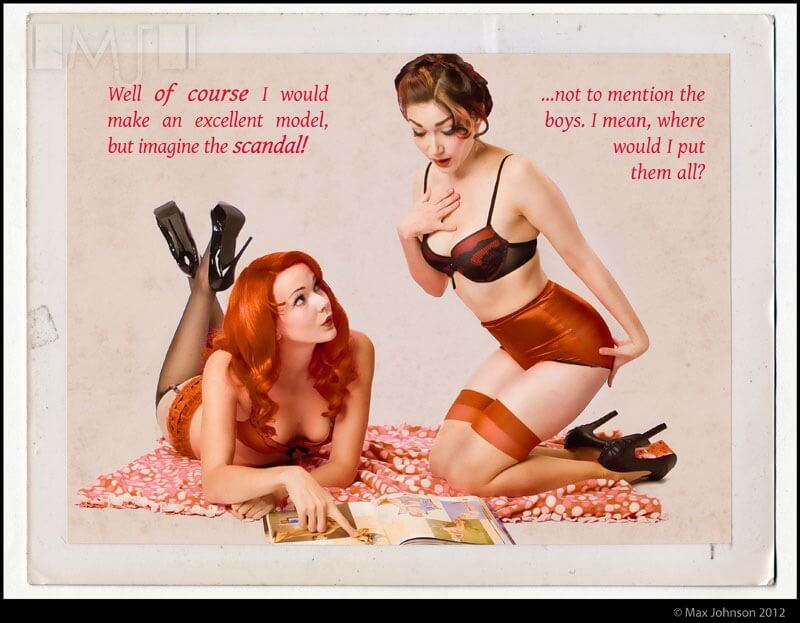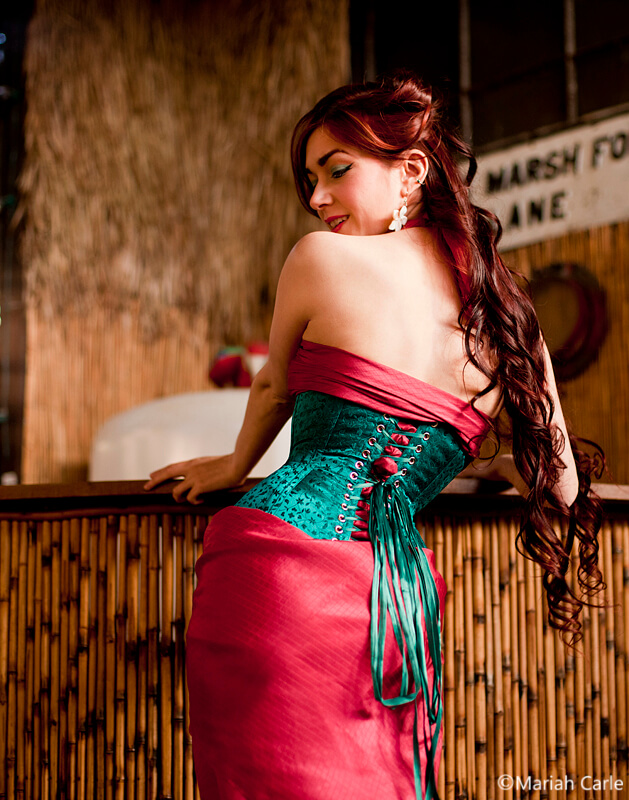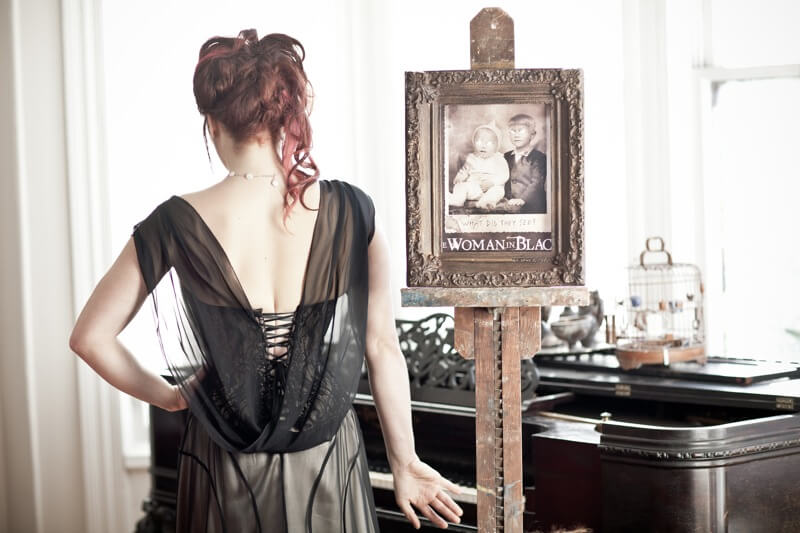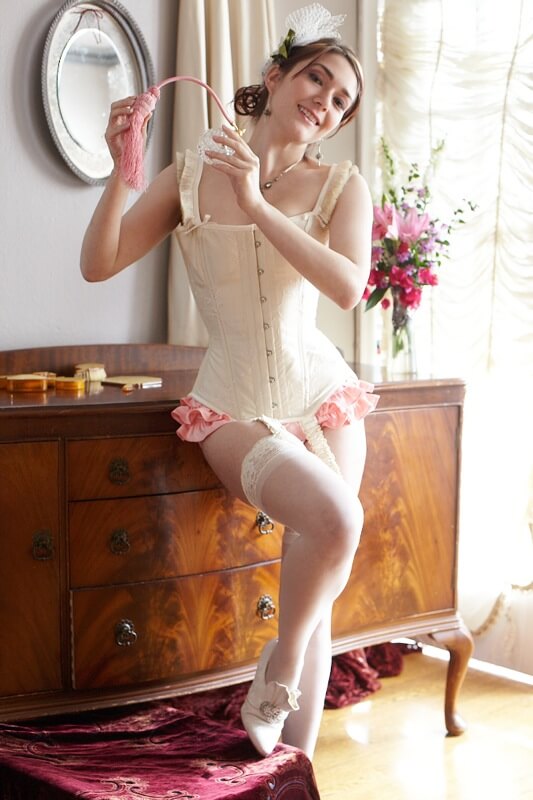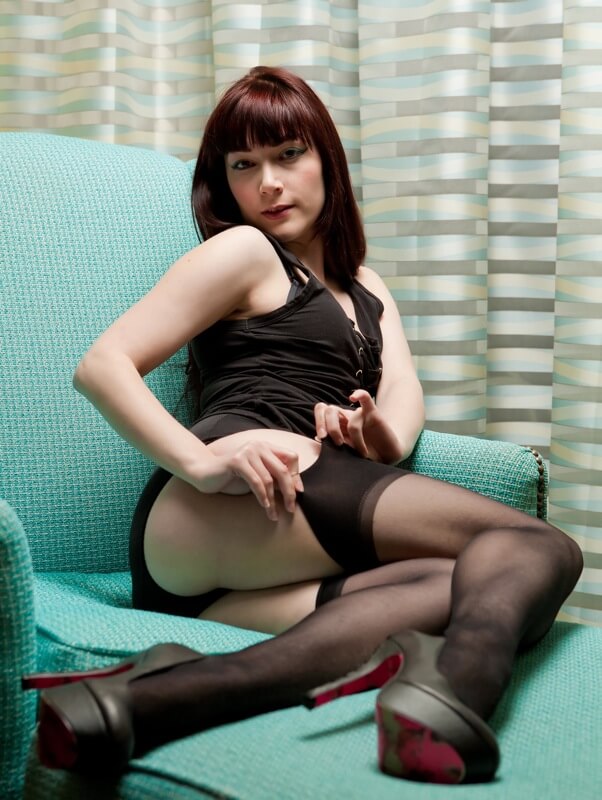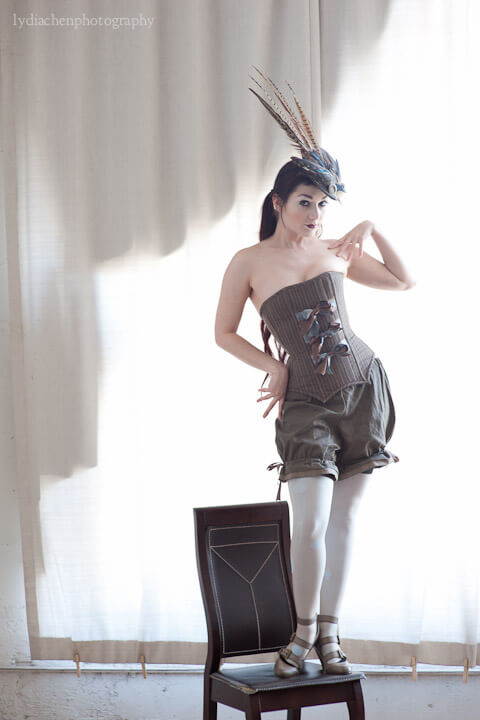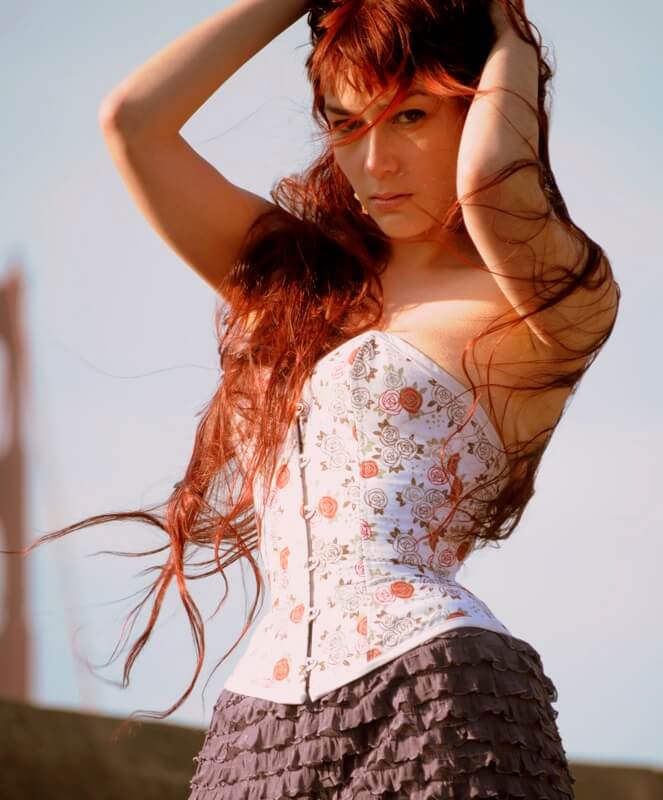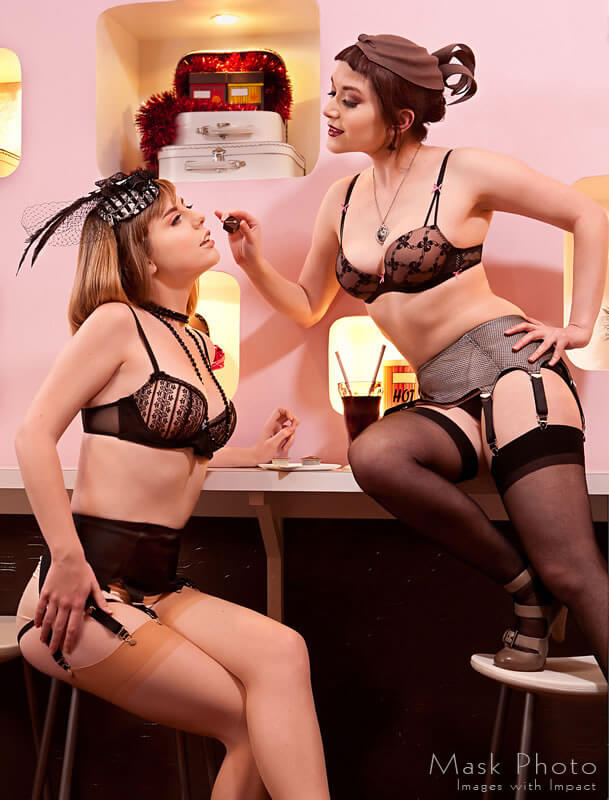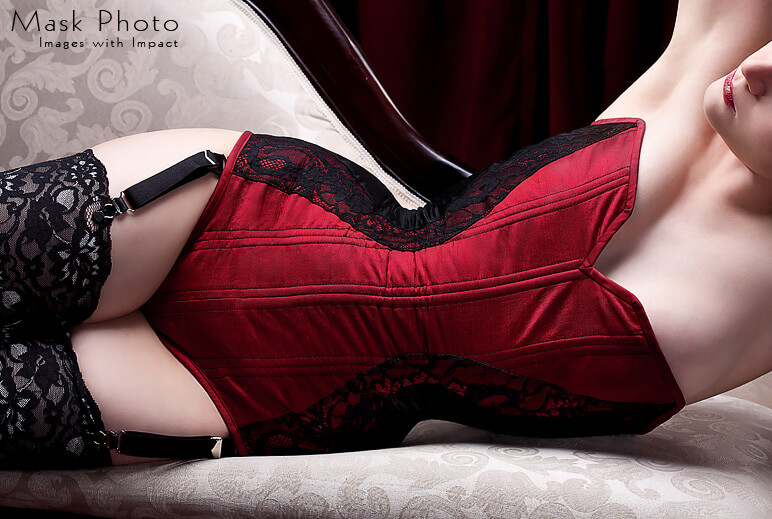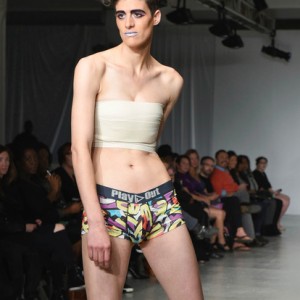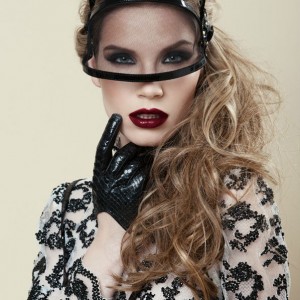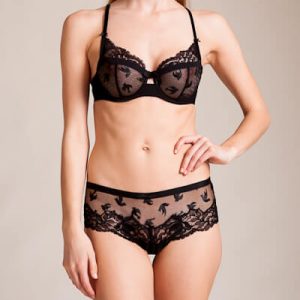How to Become a Lingerie Model
I know some of you are curious. I've seen you asking on Treacle's Tumblr. You know you've got what it takes to be a lingerie model, or you think you might, anyway, but you have no idea where to begin. Well, I'm no agent, but I am a designer who also happens to do a fair bit of modeling, so these are my suggestions for you lovelies who would like to model for lingerie designers. This mostly applies to working with independent designers, rather than large corporations – you'll need to be agency signed to get in with them.
The good news is that being a “good” model is not just about having a pretty face and a nice body (whatever that means): there are, in fact, actual skills and abilities involved. Believe it or not, not everyone who is “pretty” is photogenic, and a lot of girls who photograph exceptionally well are relatively unremarkable in real life. Of course, without going to Shallow Town, there are still some physical requirements. A proportionate, standard sized figure is necessary to fit into designers' standard sized samples; clear skin will make photographers more willing to work with you, especially on an ongoing basis; and you should keep yourself generally well maintained (this includes things like your hair cut and color, clean and trimmed or manicured nails, no habitual giant bruises, scratches, or sunburns, etc). No, you don't have to look like a Victoria's Secret model, unless you want to model for Victoria's Secret.
Other physical traits beyond that will depend hugely on the demographic of the designers you're trying to model for. Look at the types of models currently being used in the lines you're interested in modeling for. Are you the same body type? Age range? Do the models all have a certain “look” for a particular line? Tattoos and facial or body piercings will hold you back from a good amount of vanilla modeling gigs, but certain lines embrace the “alternative” look. Same with figure quirks --- if you're small busted or full figured, look to model for lines that cater to that niche. A lot of independent designers are also far less concerned about height, especially for photo modeling (as compared to runway).
Of course, as the old saying goes, it's not what you know, it's who you know. Independent designers often cast people they already know who like to model for them. In my experience (and maybe it's just my San Francisco lifestyle), creative people enjoy having creative friends. So designers, therefore, have no shortage of talented, attractive friends already willing to model for them, and there is a big advantage for us in working with a known entity. For me, since I consider my brand a bit of a “lifestyle brand,” knowing the model carries a lot of weight because I know they are a strong representative of the brand. That said, smart designers know they can't use the same few faces all the time, so the following are some skills and tips for making yourself more attractive to us. (As an aside, we also don't have a lot of money, so expect to get paid in the form of “good, clean, fun” and narcissistic fulfillment. Possibly trade or maybe champagne and cookies.)
My previous article, How to Have a Boudoir Photoshoot, mentioned a lot of basics of posing and shoot prep. The more you shoot, the more the posing concepts become muscle memory and instinctive. The next step is learning not just how to pose attractively, but how to convey a specific mood with your face and body language. Since lingerie is also known as “intimates,” a blank fashion face won't fly – some feeling of intimacy and connection with the viewer is necessary. Practice in front of the mirror to build up a versatile range of facial angles and expressions, and study lingerie catalogs and photoshoots for posing ideas. Make sure you think about your poses in relation to the garments you're supposed to be modeling. You want to make sure at the minimum that you're not covering the garment much, and, preferably, that you're actually drawing attention to the design features. Follow your favorite models on Facebook or their web portfolio and try to analyze what you think is effective about their work.
Being a self-sufficient model is the biggest in you can have for a designer. Like a lot of creatives, we're busy and sometimes easily overwhelmed. If you're high maintenance and need a lot of coddling, unless you really knock our socks off we'll just cast someone with a more professional attitude in the future. The more multi-talented you can be, the more bookable you are. Learn how to do your hair a few different ways (hair stylists are always the hardest to book; they have less need for portfolio images and often have salon jobs); invest in some photo-ready makeup and play with it in your spare time; have a variety of shoes and accessories for styling shoots, etc. The tools for this go in your “shoot bag,” which you should always always have prepared in case a booked team member has to cancel at the last minute. I've had to cover for other models more than once, or been stuck without my makeup bag at inopportune times. Prepare for the worst. It's also a big time saver when you can do these things for yourself: expect to spend at least an hour, each, on hair and makeup if you're working with professionals. As I mentioned in my article on multitalented pinup artists, contemporary model Morgana has become very popular with a lot of UK designers because they know she does the work of essentially an entire photo team, by herself, and she does it up to the same standard.
Conversely, having an established network of collaborators to call upon is also hugely helpful. Some shoot concepts call for more complicated elements than can be pulled off with just a model and photographer. Knowing reliable photographers, makeup artists, and even other models that like to do trade/portfolio shoots, mesh well with you, and consistently provide high quality work makes it much easier to coordinate a shoot, and designers will thank you for it if you save them the hassle of finding people and managing their conflicting schedules.
If you're not sure where to get started on all of this and have no modeling experience whatsoever, I recommend you make an account on Model Mayhem. For models, it's acceptable to only have snapshots to start with, but avoid candid photos, cell phone shots, and self portraits at arm's length. If you have a friend with a decent camera, ask them to take a few shots of you. Keep your bio text relevant, polite, and grammatically correct. Make sure your listed measurements are accurate. Bust and hips at their widest point, waist at its narrowest, measuring tape parallel to the floor always. If I see a model with unlisted measurements, it equates to them not wanting to work with designers: you shoot yourself in the foot if we have to go out of our way to see if you'll even fit in our samples, because we're just not going to do it. We'll move onto the next profile.
Then, as you build up your portfolio with TFP (trade for pictures) shoots, hang out in the forums, especially the Critiques and Model Colloquy. There you can learn what makes for stronger images and get targeted advice for modeling. Of course, there will also be a lot of threads and responses that you'll have to take with a grain of salt, so develop a thick skin and block out anything that's not actually constructive. (The number of people recommending $30 “corsets” in various threads makes me nauseous just thinking about it.) Browsing others' work, you'll also learn about various genres and niches that appeal to and inspire you.
Last-minute additions based on comments and feedback, aka, things I meant to mention or straight-up forgot, with credits to those who reminded me.
-BE RELIABLE. This goes for any job, right? But when flaky models are the norm, they make you look even better when you actually show up. Consistently. Keep communication lines open if something legitimately arises that prevents you from shooting at your best (temporarily disfiguring or fatiguing illness, losing your job or similar large-scale trauma, etc.) -Sannie, Alisha
-Your ability to get work largely depends on the area you live in, or, at least, are willing to (and do) travel to. -KathTea
-A seamless thong in your-flesh-tone is a must for your shoot bag. Buy several so you're not screwed if one ends up in the wash. -Catherine, Kiss Me Deadly
Are you a lingerie model? What do you think you've done that makes you appealing to designers? Designers, what do you look for in a model?





